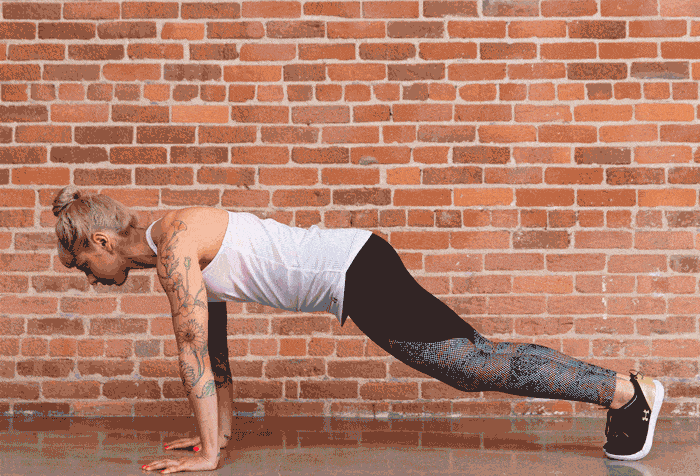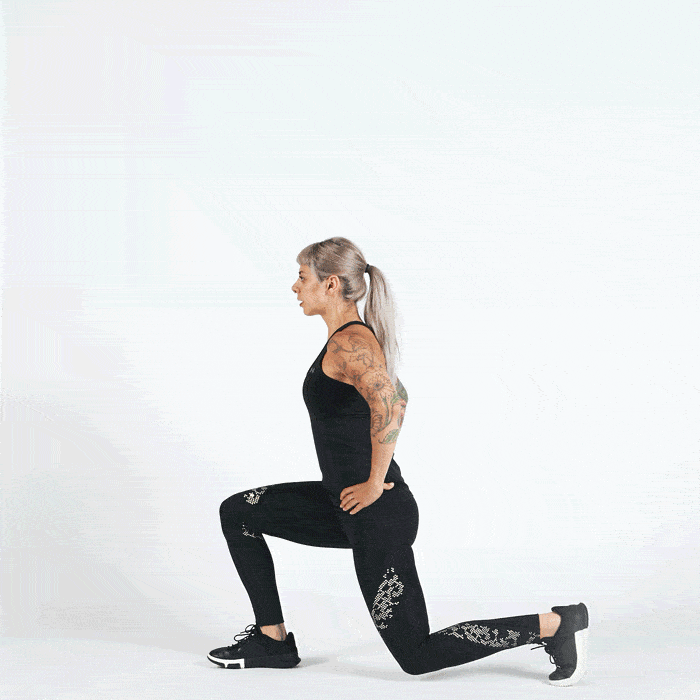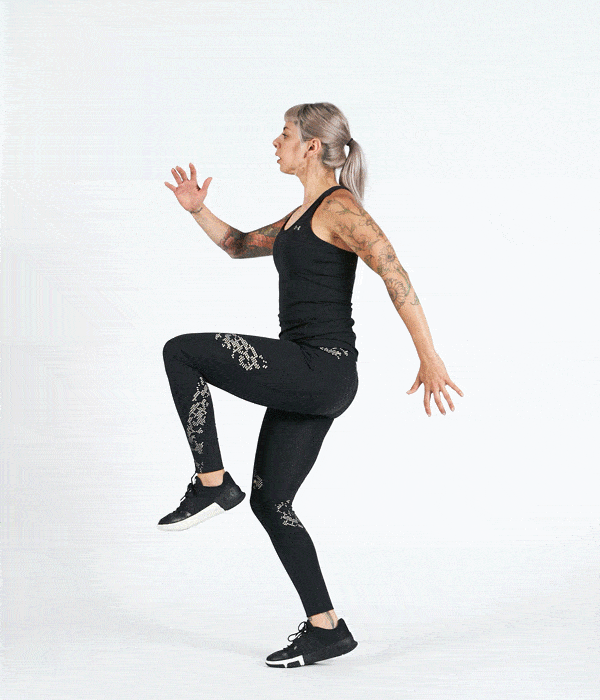Few exercises have been as divisive in recent years as burpees. Advocates say they’re the perfect full-body exercise, while detractors say they’re dangerous.
When done correctly, burpees can be a great full-body conditioning move. After all, this dynamic exercise works your shoulders, triceps, back, core and legs simultaneously, making them a quick, effective calorie-burner. “The more muscles you use in your body simultaneously, the more your heart has to work to circulate blood and get those muscles working,” explains Eliza Nelson, ACE certified personal trainer and orthopedic exercise specialist.
That said, burpees can be tricky to perform correctly, especially when done quickly and in high-rep amounts. If you break the exercise down into its separate components, you’ll note that many of the components require a certain degree of strength, mobility and fitness. Burpees have you flowing from a standing position into a deep squat, then to a plank, a pushup and finally back to standing, where you perform a jump for good measure.
When people try to flow through these complex movements without first building their base strength and mobility, they can place a lot of stress on the lower back, wrists and shoulders. For example, many people have a tendency to drop their lower back toward the floor when they go from squat to plank or plank to pushup, and/or they’ll round their back too much when hopping from plank into a low squat. Many of these issues could be corrected with proper prep: “It’s a good idea to make sure that you understand each portion of the movement,” Nelson says.
In addition, people with low blood pressure may experience lightheadedness from getting up from the floor quickly. According to Nelson, this is because your body is trying to circulate your blood from the upper portion to the lower portion, which can cause dizziness during rapid movement changes.
Luckily, there are plenty of other great conditioning exercises you can do instead of burpees. If you want to work your way up to full burpees, you can modify them while you build your strength or resolve any mobility limitations. For example, if you have trouble performing full pushups, simply omit them and work on pushups separately in your workout. If getting up from the floor quickly makes you light-headed, slow things down.
But if you absolutely hate burpees (or you simply can’t do them yet), you can still get your heart rate up and your muscles firing on all cylinders with one of these 11 conditioning move alternatives.
Squat Jumps

Stand tall. Push your hips back and bend at the knees to lower into a squat. Once your thighs are parallel to the floor, push through your feet to explode upward, driving your arms overhead. Land softly and repeat.
Mountain Climbers

Get into a high-plank position. Brace your core and drive one knee in toward your chest, making sure to keep your raised foot flexed. Quickly alternate knees, returning your raised foot to the floor. Continue alternating knees quickly.
Dumbbell or Kettlebell Thrusters

Stand tall with your feet hip-width apart. Hold two dumbbells or kettlebells at shoulder-height, push your hips back and bend at the knees to lower into a squat. Once your thighs are parallel to the floor, drive through your heels to return to standing and use the power of your lower body to help you press the dumbbells or kettlebells overhead. Then, lower the weights back down to your shoulders with control and immediately lower into your next squat.
Plyo Lunges

Begin in a lunge position with your front thigh parallel to the floor. To initiate the movement, jump up explosively through your front leg and switch your legs midair. Land softly.
Kettlebell Swings

Begin standing with your feet shoulder-width apart, knees slightly apart, with a kettlebell on the floor about a foot in front of you. Grip the handle of the kettlebell with both hands and, keeping your back straight and shoulders down, hike the kettlebell back and up between your legs. Once the kettlebell can’t go any farther, forcefully extend your hips to propel the kettlebell upward. Keep your arms straight throughout the movement. When the kettlebell reaches chest-height, pull it back down between your legs. Keep your chest high at all times.
Jumping Jacks
Stand tall. Quickly hop your feet apart while swinging both arms out at your sides to bring them straight overhead. As soon as you land, hop to bring your feet back together and your arms back down at your sides. Immediately launch into the next repetition.
Jump Rope
This move is pretty self-explanatory. Stay light on your feet and move the rope with your wrists, keeping your arms close to your body. Increase difficulty by passing the jump rope under your feet twice per rep.
Medicine Ball Slams

Begin standing with a medicine ball in between your feet. Bend down to grip the ball with both hands and use the power of your legs and hips to help you bring the ball up over your head. Then, brace your core and slam the ball on the floor in front of you. Repeat.
High Knees

While standing in place, drive one knee toward your chest as quickly as you can without hunching your back. Place your foot back on the floor and immediately drive the other knee high toward your chest. Continue to alternate your knees as quickly as you can.
Lateral Bounds

Stand tall. Squat down halfway and jump explosively to one side, aiming to cover as much distance as possible. Land softly before jumping explosively to the other side.
Bounds/Skips

Think of this as an exaggerated running motion. Jog to start the drill, and after a few steps, push off explosively with one foot to bring that leg forward. At the same time, drive the opposite arm forward to help create more power. Immediately repeat with the other leg and opposite arm.




